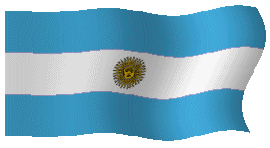
B"H
Jewish  Tours
Tours
 Buenos Aires, Argentina
Buenos Aires, Argentina
ARGENTINA, South American Federal Republic, general population (2004) 39,150,000; Jewish population 190,000.
The Jewish educational network had to cope with the
implementation of Catholic instruction in the official schools and consequently
with the removal of non-Catholic pupils from such classes. Nevertheless, neither
the overt public hostility, nor the occasional official prohibition of the use
of Yiddish at public meetings arrested the development of the Jewish community.
The Chevra Keduscha (which became in the 1940s AMIA) increased
its communal activities and in 1935 founded in Buenos Aires the Va'ad ha-Ḥinnukh,
a committee that centralized the educational system in Buenos Aires (with
several dozen complementary schools), which had hitherto been promoted mainly by
various synagogues, by some Zionist parties, and by the Zionist Teachers'
Organization. From that time on the Jewish schools became one of the most vital
forces enhancing Jewish socialization and community organization in Argentina,
and they reflected the various streams of Jewish political views in the
community. Until the late 1960s these schools functioned on a complementary
basis, while the children were free from studies in the public schools, either
in the morning shift or in the afternoon. The existing schools, for Ashkenazim
and Sephardim, had many ideological trends: religious, traditional, leftist,
secular, Zionist, non-Zionist, and anti-Zionist. The Va'ad ha-Ḥinnukh
succeeded in 15 years of activity in bringing most of the schools to a minimal
common curricula and in improving the physical conditions of the schools as well
as the working conditions of the teachers. In the 1930s and the 1940s Yiddish
was almost the only language of instruction for most Ashkenazi schools, even for
the Zionist ones. The number of students in Jewish schools in Buenos Aires
together with the schools coordinated by the Va'ad
|
Visite nuestro sitio/Visit our home page: |